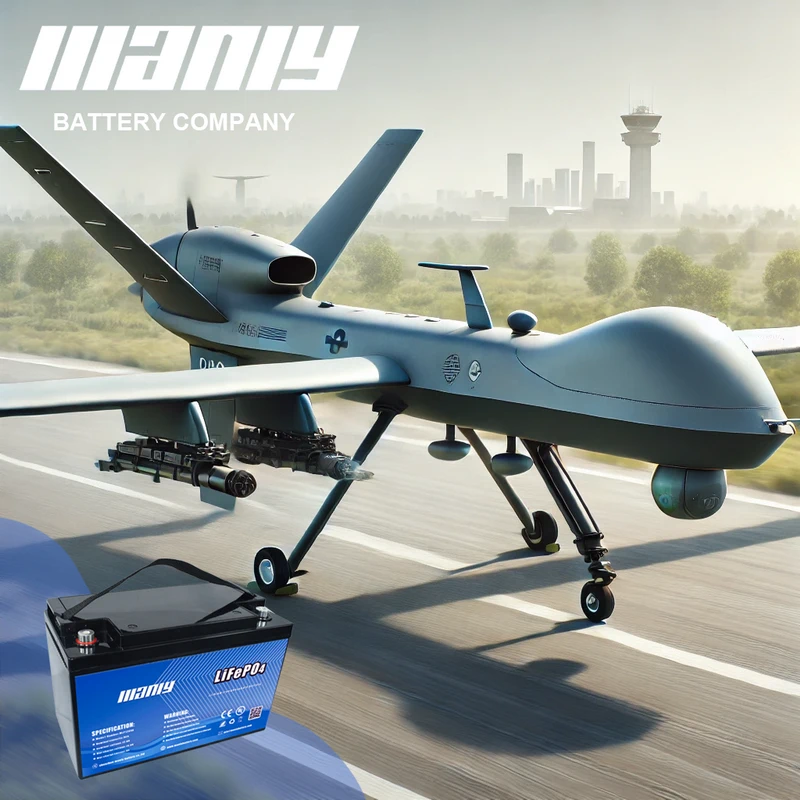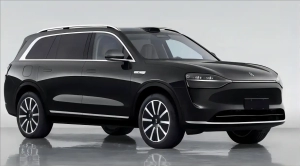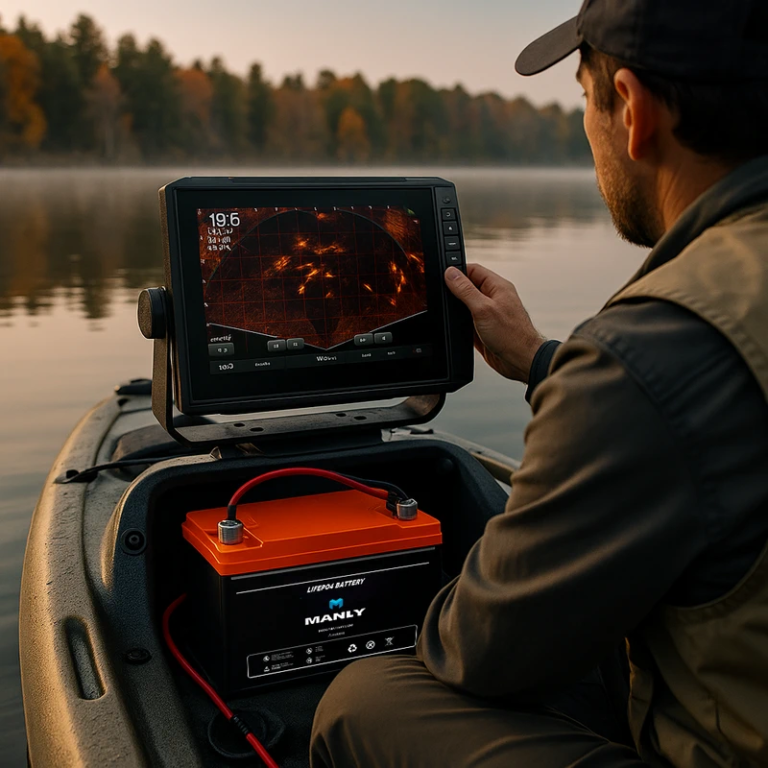Qu'est-ce qu'une batterie militaire?
Table des matières
- Qu'est-ce qu'une batterie militaire?
- Types de batteries militaires
- Technologies clés dans les batteries militaires
- Applications des batteries militaires
- 1. Équipement électronique et communication portable
- 2. Véhicules aériens sans pilote (UAV) et drones
- 3. Véhicules militaires électriques
- 4. Opérations navales et sous-marines
- 5. Capteurs à distance et équipement de surveillance
- 6. Équipement médical sur le terrain
- 7. Éclairage de champ
- 8. Power de sauvegarde d'urgence
- Considérations lors de la sélection des batteries militaires
- Tendances futures de la technologie des batteries militaires
- Pourquoi choisir une batterie virile pour vos besoins de batterie militaire?
- Conclusion
- FAQ
- Recherche rapide
- En savoir plus sur la batterie
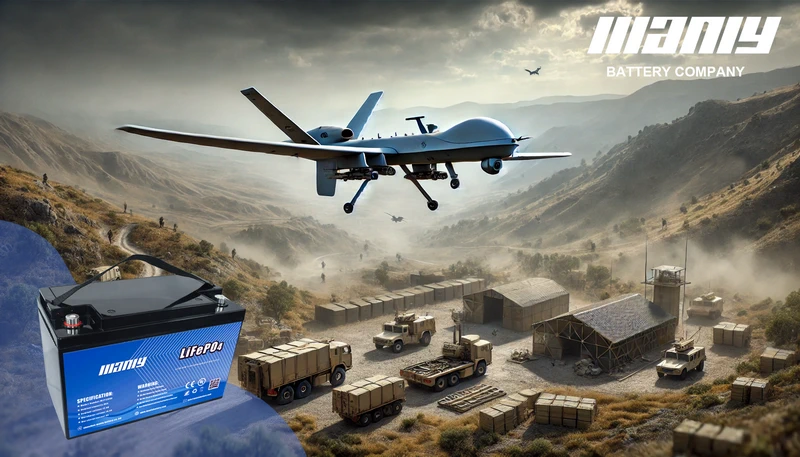
Types de batteries militaires
Military batteries can be classified into two primary categories based on their rechargeability: non rechargeable and rechargeable batteries. Both types serve distinct functions, each tailored to different military applications where reliability and longevity are critical. Understanding the differences between these categories helps ensure the selection of the right power source for specific military needs.1. Batteries non rechargeables pourMilitaire
Non rechargeable batteries, also known as primary batteries, are designed for one-time use. Once these batteries are depleted, they cannot be recharged and must be disposed of and replaced. Military batteries in this category are often chosen for their long shelf life and ability to perform in high-demand, mission-critical situations.These batteries are typically used in equipment where reliability is key, and constant recharging is impractical. Some examples include Lithium Manganese Dioxide (LiMnO2) and Lithium Thionyl Chloride (Li-SOCl2). Both of these battery types are ideal for military devices that require long operational lifespans without regular maintenance, such as in remote sensors, emergency beacons, and other portable equipment.- Dioxyde de manganèse au lithium (limno2)Les batteries sont bien adaptées à une utilisation dans les communications militaires et autres systèmes qui exigent une densité d'énergie élevée et une production stable sur des périodes prolongées.
- Chlorure de thionyl lithium (li-Socl2)Les batteries offrent des densités d'énergie encore plus élevées, ce qui les rend parfaites pour les petits appareils militaires légers qui doivent fonctionner dans des environnements extrêmes, tels que les systèmes satellites et les équipements de surveillance.
2. Batteries rechargeables pourMilitaire
Batteries rechargeables are also known as secondary batteries and are designed to be reused multiple times, offering significant advantages over their non-rechargeable counterparts. These batteries are particularly important in modern military equipment, as they reduce the need for frequent replacements and can provide a more sustainable and cost-effective power solution.Lithium Ion (Li-ion) and Lithium Ion Polymer (LiPo) batteries are common examples of rechargeable military batteries. These batteries are favored for their ability to deliver high energy output and rapid recharge times, which are essential in military scenarios where downtime must be minimized.- Ion lithium (li-ion)Les batteries sont largement utilisées dans des applications militaires telles que les drones, les véhicules électriques et les équipements de communication en raison de leur densité d'énergie élevée et de leur durée de vie plus longue. Ils peuvent supporter des milliers de cycles de charge et fournir la puissance nécessaire aux opérations exigeantes.
- Polymère à ion au lithium (LIPO)Les batteries offrent l'avantage supplémentaire d'une conception plus flexible, ce qui leur permet d'être utilisés dans une variété de formes et de tailles. Cette flexibilité est avantageuse pour les appareils militaires compacts et portables qui nécessitent une source d'énergie légère mais puissante.
Technologies clés dans les batteries militaires
Military batteries stand out due to the advanced technologies that power them, providing reliability and efficiency under the most demanding conditions. These batteries are engineered to support a range of military equipment, including communication systems, UAVs, electric vehicles, and advanced weaponry. The high-performance requirements of military operations demand cutting-edge technology, ensuring optimal functionality even in extreme environments. Here’s a look at some of the key technologies used in battements militaires.1. Batteries de dioxyde de soufre au lithium (LISO2)
Lithium Sulfur Dioxide (LiSO2) batteries are widely used in military applications due to their high energy and power density. These batteries offer a long shelf life and are capable of maintaining performance over a broad temperature range, which makes them ideal for use in harsh environments where reliability is critical. The unique chemistry of LiSO2 batteries allows them to operate efficiently in both extreme heat and cold, which is especially important for military missions conducted in diverse geographic locations.Applications of LiSO2 batteries in the military include use in portable equipment such as field radios, satellite systems, and surveillance devices. Their high energy density ensures long operational times for devices that are essential during extended missions, and their ability to function in extreme temperatures allows them to be used in challenging terrains, such as the Arctic or desert conditions.2. Batteries lithium-ion (Li-ion)
Lithium Ion (Li-ion) batteries are one of the most commonly used technologies in military batteries due to their efficiency, high energy density, and reliable performance. These batteries are favored for their ability to operate in a wide temperature range, from -51°C to 75°C, making them ideal for use in military equipment exposed to fluctuating weather conditions. Additionally, Li-ion batteries have a longer lifespan compared to older technologies like Nickel Cadmium (NiCd) batteries, offering higher reliability and reducing the need for frequent replacements in the field.In military applications, Li-ion batteries are commonly used to power drones, unmanned aerial vehicles (UAVs), and electric vehicles. Their lightweight nature also makes them particularly attractive for use in portable electronics and advanced weapon systems, where minimizing weight is crucial for enhancing mobility and efficiency. Furthermore, Li-ion batteries provide fast charging capabilities, reducing downtime for military equipment that needs to be ready at a moment's notice.3. Batteries de cadmium de nickel (NICD)
Nickel Cadmium (NiCd) batteries, though now largely replaced by newer technologies like Li-ion, still offer some key benefits that make them useful in certain military applications. One of the main advantages of NiCd batteries is their robust performance in extreme temperatures, especially in very cold conditions. This makes them ideal for powering equipment used in Arctic or high-altitude environments where Li-ion batteries may struggle to function effectively.Another benefit of NiCd batteries is their ability to deliver a high discharge rate, making them suitable for devices that require quick bursts of energy, such as tactical radios or searchlights. However, NiCd batteries do have some drawbacks, including their relatively lower energy density compared to Li-ion batteries and the memory effect, which can reduce their effective capacity if not properly maintained.While NiCd batteries are still used in specific military contexts, they are increasingly being phased out in favor of more efficient and long-lasting solutions like Li-ion batteries.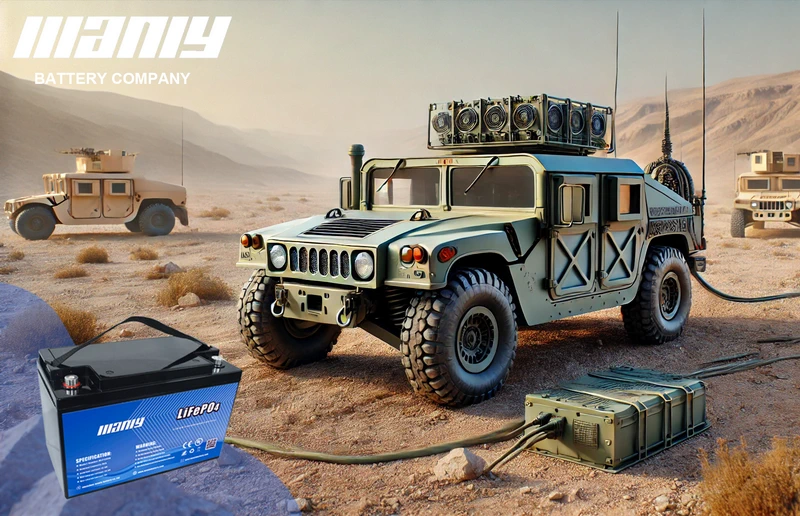
Applications des batteries militaires
Military batteries play an essential role in powering a wide variety of military equipment and ensuring the success of operations. From communication tools to electric vehicles, these batteries are crucial for maintaining operational continuity in remote and challenging environments. Here’s a closer look at the diverse applications of military batteries and how they support different sectors within the military.1. Équipement électronique et communication portable
Military batteries are at the heart of powering portable electronics and communication devices, which are essential for soldiers in the field. These devices, including radios, night vision goggles, GPS units, and smartphones, rely on military batteries to ensure seamless communication and operational readiness. The ability to stay connected with command centers, coordinate movements, and access critical information is vital during missions, and military batteries provide the necessary power to maintain these capabilities for extended periods.For example, lithium-ion and lithium-polymer batteries are commonly used in military batteries for communication tools due to their light weight, long life, and high energy density, allowing troops to rely on them for long-term operations without the need for frequent replacements.2. Véhicules aériens sans pilote (UAV) et drones
The use of military batteries in unmanned aerial vehicles (UAVs) and drones has transformed modern reconnaissance, surveillance, and combat missions. Drones, which are increasingly used for intelligence gathering, targeted strikes, and surveillance, depend on high-performance military batteries to provide the long flight times and rapid recharging required for mission success.Lithium-ion (Li-ion) batteries are typically used in UAVs due to their lightweight nature and high energy capacity. This technology enables drones to fly for extended periods, enhancing their operational range and efficiency. Additionally, the ability to recharge quickly minimizes downtime, making drones more effective in fast-moving military operations.3. Véhicules militaires électriques
Electric military vehicles are gaining traction due to their low operational costs, reduced emissions, and stealth advantages. Military batteries provide the necessary power to electric vehicles, making them more efficient and environmentally friendly compared to traditional fuel-powered options.These vehicles, including electric tanks, trucks, and reconnaissance vehicles, benefit from the high energy density and quick charging capabilities of lithium-ion batteries, which power everything from propulsion to electronic systems. The quiet operation of electric military vehicles also offers a tactical advantage, allowing for stealthy movements in sensitive environments where noise could compromise security.4. Opérations navales et sous-marines
In naval vessels and submarines, military batteries are critical for providing reliable power to essential systems, such as propulsion, communication, and navigation. These batteries are designed to perform under extreme conditions, including high pressure, low temperatures, and long durations underwater.Lithium-ion batteries are often used in modern submarines due to their high energy density, long life, and ability to recharge efficiently. Their capacity to provide sustained power in confined spaces makes them ideal for use in submarines, where operational efficiency is paramount, and resources are limited.5. Capteurs à distance et équipement de surveillance
Military batteries are vital for powering remote sensors and monitoring equipment used in military operations. These devices, which are often deployed in challenging terrains for surveillance, environmental monitoring, or enemy detection, require durable batteries that can withstand harsh conditions and provide long-term reliability.Lithium-thionyl chloride (Li-SOCl2) batteries are frequently used in remote sensors due to their ability to operate over a wide temperature range and their extended shelf life, which ensures continuous operation for months or even years without needing a battery replacement.6. Équipement médical sur le terrain
In combat situations, military batteries provide the power needed for field medical equipment, such as portable defibrillators, monitoring devices, and other life-saving tools. These devices often need to be highly portable and reliable, especially when deployed in remote or dangerous areas where access to power is limited.Lithium-ion batteries are commonly used to power these devices, offering the combination of high energy density, long cycle life, and light weight necessary for military medical teams to deliver care in the field.7. Éclairage de champ
Military operations often take place in low-light conditions, and military batteries are used to power portable and mobile lighting systems, ensuring safety and visibility in tactical environments. These systems include flashlights, headlamps, and larger lighting units for camps and patrols.Lithium ion batteries are frequently used for these applications, as they provide a compact, rechargeable solution that can support high-intensity lighting for extended periods. The ability to easily recharge these batteries makes them ideal for operations in areas with limited access to power sources.8. Power de sauvegarde d'urgence
In critical situations, military batteries serve as backup power sources to ensure continuity of operations during emergencies. These batteries provide essential power to military infrastructure and equipment in case of a power outage or other disruptions, allowing operations to continue seamlessly.Sealed lead-acid (SLA) batteries are often used in these applications due to their reliability, robustness, and ability to store large amounts of energy, making them ideal for emergency backup in military bases and field stations.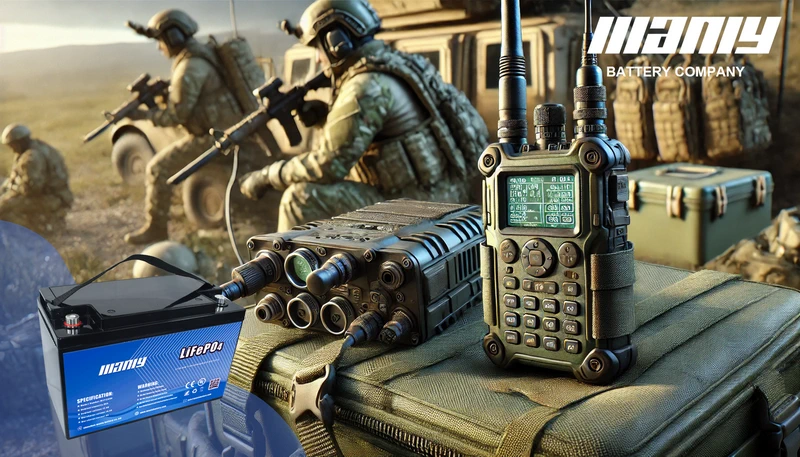
Considérations lors de la sélection des batteries militaires
Selecting the right military battery is crucial for ensuring operational success in demanding military environments. Factors like energy density, durability, environmental adaptability, safety, and cost are key to determining which military batteries are best suited for different applications. Here are the key considerations when selecting military batteries.1. Densité d'énergie
Energy density refers to the amount of energy a battery can store in relation to its size or weight. For military batteries, higher energy density is essential as it allows military equipment to run for longer periods without frequent recharging, especially in energy-intensive operations.In military applications, where extended mission times are often necessary and charging stations are scarce, batteries with high energy density are critical. Equipment such as communication devices, unmanned aerial vehicles (UAVs), and medical tools all benefit from military batteries with high energy density, as these ensure continuous operation over long durations. Lithium ion and lithium-polymer batteries, known for their high energy density, are commonly used to power military devices in remote locations where maintaining a power source is a priority.- Exemple:La densité d'énergie des batteries au lithium varie généralement de 150 à 250 wh / kg. Cela permet aux appareils comme les drones de fonctionner plus longtemps, avec de nombreux drones maintenant capables de voler pendant plus de 10 heures sur une seule charge, améliorant les capacités opérationnelles et réduisant les temps d'arrêt.
2. Durabilité et fiabilité
The durability and reliability of military batteries are paramount, especially as they are often exposed to extreme conditions such as temperature extremes, humidity, physical shocks, and vibrations. Batteries used in military vehicles, field equipment, and combat systems must withstand these harsh environments without compromising their performance or safety.For instance, lithium ion batteries are increasingly being used in military applications for their ability to endure demanding conditions. These batteries can continue operating in temperatures ranging from -40°C to 60°C (-40°F to 140°F), ensuring they remain reliable in harsh environments, including those in the Arctic or desert.- Exemple: The ability of lithium ion batteries to perform reliably under stress is crucial for unmanned ground vehicles (UGVs) and communication systems that operate in remote, rugged locations. The military's use of lithium-ion batteries in these systems has significantly improved the reliability of such devices in the field, offering a combination of long life and high performance.
3. Caractéristiques de sécurité
Safety is a top priority when selecting military batteries, as these batteries are often used in high-risk environments. The risk of thermal runaway, short-circuiting, or explosions must be minimized to ensure the safety of both military personnel and sensitive equipment.Military batteries need to include advanced safety mechanisms such as thermal stability, overcharge protection, and safeguards against overcurrent. These features are essential for preventing incidents such as fires or explosions that could occur if batteries are exposed to extreme temperatures or physical damage.- Exemple:Les batteries au lithium ion, qui sont couramment utilisées dans les opérations militaires, sont équipées de systèmes de gestion des batteries (BMS) qui surveillent la température, la tension et le courant des cellules pour empêcher la surchauffe et le fulgard thermique. Cela les rend plus sûrs pour une utilisation dans les zones de combat où des températures extrêmes et une manipulation rugueuse sont courantes.
4. Coût et valeur
While military batteries often come with higher upfront costs compared to commercial batteries, it’s essential to balance cost with long-term performance and reliability. Military organizations must factor in the battery’s lifespan, efficiency, and maintenance needs when determining its overall value.For example, lithium ion batteries have a higher initial cost than traditional lead-acid batteries, but their longer lifespan and higher performance make them more cost-effective over time. These batteries typically last 3 to 5 times longer than lead-acid batteries, reducing the need for frequent replacements and lowering long-term operational costs.- Exemple:Dans une flotte militaire typique, le remplacement des batteries au lithium ion tous les 5 ans plutôt que tous les 1 à 2 ans, comme avec les batteries au plomb-acide, conduit à des économies substantielles sur les remplacements et réduit les temps d'arrêt opérationnels.
5. Impact environnemental
Sustainability is increasingly a priority in military operations, and the environmental impact of military batteries is under greater scrutiny. As the military seeks to adopt more eco-friendly solutions, minimizing the carbon footprint of military batteries has become crucial.To reduce environmental impact, manufacturers are exploring more sustainable materials and improving recycling processes. For example, lithium ion batteries are more energy-efficient and have a smaller environmental footprint than traditional lead-acid batteries, which are more difficult to recycle and can lead to environmental damage when improperly disposed of.- Exemple:Les militaires intégrent de plus en plus les systèmes d'énergie solaire dans leurs opérations, réduisant la dépendance à l'égard des sources d'énergie traditionnelles. Les batteries au lithium-ion sont souvent utilisées en tandem avec ces systèmes pour créer des solutions d'alimentation durables qui peuvent être facilement reconstituées sur le terrain, en soutenant les opérations dans des zones éloignées tout en minimisant l'impact environnemental.
6. Maintenance et logistique
Effective maintenance and logistics are crucial for the smooth operation of military batteries. These batteries must be easy to maintain, especially when deployed in remote locations where access to replacement parts or skilled personnel may be limited.For military batteries to be truly effective, they need a long lifespan and should be easily replaceable or repairable in the field. Ensuring that spare parts are readily available and that batteries are resistant to physical damage during transport is essential for maintaining operational efficiency.- Exemple:Les batteries au lithium-ion ont une durée de vie beaucoup plus longue que les batteries traditionnelles et nécessitent un entretien moins fréquent. Cela réduit le fardeau logistique de devoir remplacer ou réparer les batteries pendant les missions prolongées. De plus, avec l'utilisation de technologies de charge intelligentes qui fournissent une surveillance de la santé des batteries en temps réel, les unités militaires peuvent optimiser l'utilisation de la batterie et prévenir les échecs inattendus.
Tendances futures de la technologie des batteries militaires
The global military battery market is experiencing rapid growth, driven by the increasing demand for advanced power systems. With a projected market value of $8.32 billion in 2024 and an expected increase to $13.59 billion by 2030, the military power solutions market is expanding at a compound annual growth rate (CAGR) of 8.52%. This growth reflects the need for higher-performing, more energy-dense systems that support military operations worldwide, from remote outposts to advanced combat scenarios. Innovations in military batteries aim to improve energy density, miniaturization, and sustainability, all while adhering to the high-performance and safety standards required in military settings.1. Batteries à l'état solide
One of the most promising advancements in military battery technology is the development of solid state batteries. These batteries use a solid electrolyte instead of a liquid one, which not only makes them safer but also more durable. Solid state batteries are less likely to catch fire or overheat compared to traditional lithium ion batteries, which is crucial for military applications where safety is paramount.The transition to solid-state batteries could revolutionize military batteries by offering higher energy densities, meaning smaller and lighter batteries that can deliver more power. These batteries also have the potential for faster charging times and longer lifespans, further enhancing the performance of military systems, including drones, electric vehicles, and communication devices. With the growing need for reliable, high-energy power sources, solid state batteries could be a game-changer for military technology in the coming years.2. Systèmes d'énergie hybride
As the demands of modern warfare become increasingly complex, hybrid energy systems combining multiple power sources are gaining attention in military batteries. These systems integrate lithium ion batteries with other energy sources, such as fuel cells or supercapacitors, to provide enhanced performance and greater operational endurance.Hybrid systems could improve military batteries by offering better fuel efficiency, faster charging times, and increased reliability in diverse conditions. This flexibility allows military forces to extend operational periods, ensuring that essential equipment remains powered for longer without the need for constant recharging or battery replacements. By incorporating renewable energy sources and advanced technologies, hybrid energy systems can provide a sustainable and flexible solution to meet the needs of modern military operations.3. Solutions de charge avancées
As military batteries become more integral to defense operations, the need for faster and more efficient charging solutions grows. Innovations in advanced charging technology are being developed to support military operations where time is a critical factor. These advancements include wireless charging and ultra-fast charging systems, which significantly reduce the time needed to recharge military batteries in the field.Faster charging times will ensure that essential equipment, such as communication systems, unmanned vehicles, and medical devices, remain operational without delays. This is especially important in combat zones where every minute counts. As military batteries evolve to meet the needs of modern warfare, these advanced charging technologies will help maintain the operational readiness of military forces, even in the most demanding environments.